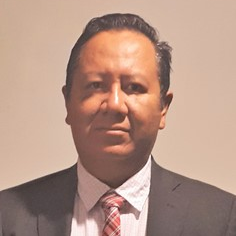Thin Film Materials Integration for Harvesting Energy Devices
A special issue of Micromachines (ISSN 2072-666X). This special issue belongs to the section "D:Materials and Processing".
Deadline for manuscript submissions: closed (30 November 2021) | Viewed by 5129
Special Issue Editor
Special Issue Information
Dear Colleagues,
Energy harvesting systems have been subjected to many research and industrial developments in the past decade, due to the growth in the popularity of low-power electronic devices, such as wireless networks, wearables, and consumer electronics, among other applications. Energy harvesters are self-sustaining systems capable of capturing, processing, storing and applying small amounts of free energy from the environment to usable electrical energy in low-power electronics. These are composed of three stages: the micro-generator or source transducer, the voltage booster or power converter and the storage element. Piezoelectric, thermoelectric, electromagnetic RF, and photovoltaic techniques are some examples of energy harvesting technologies. One example is the development of piezoelectric materials for mechanical vibrations, however some drawbacks must be addressed in order to integrate the different materials into silicon, not only in the harvesting stage, but also to embed a power management electronic circuit. Another approach is the use of silicon nanostructures as thermoelectric thin film devices for energy harvesting. Accordingly, this Special Issue research papers, and review articles that focus on materials characterization and its integration into harvesting devices, electronic architectures to improve the efficiency in the energy harvesting system, such as the maximum power point tracking (MPPT) circuits, microfabrication and process integration for the energy transducers, and power management electronic systems for novel developments in the field of harvesting energy applications.
We look forward to receiving your submissions!
Dr. Roberto Carlos Ambrosio
Guest Editor
Manuscript Submission Information
Manuscripts should be submitted online at www.mdpi.com by registering and logging in to this website. Once you are registered, click here to go to the submission form. Manuscripts can be submitted until the deadline. All submissions that pass pre-check are peer-reviewed. Accepted papers will be published continuously in the journal (as soon as accepted) and will be listed together on the special issue website. Research articles, review articles as well as short communications are invited. For planned papers, a title and short abstract (about 100 words) can be sent to the Editorial Office for announcement on this website.
Submitted manuscripts should not have been published previously, nor be under consideration for publication elsewhere (except conference proceedings papers). All manuscripts are thoroughly refereed through a single-blind peer-review process. A guide for authors and other relevant information for submission of manuscripts is available on the Instructions for Authors page. Micromachines is an international peer-reviewed open access monthly journal published by MDPI.
Please visit the Instructions for Authors page before submitting a manuscript. The Article Processing Charge (APC) for publication in this open access journal is 2600 CHF (Swiss Francs). Submitted papers should be well formatted and use good English. Authors may use MDPI's English editing service prior to publication or during author revisions.
Keywords
- energy harvesting
- materials characterization
- power management circuits
- microtechnology






